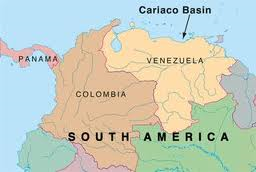We also recently learned of this work in oyster restoration going on in South America. The nature Conservancy is part of this program. As we get deeper involved in this field, their name rises with increasing frequency.
Thousands of Pearl Oysters Produced to Aid Restoration in Eastern Venezuela
|
|
|
In Eastern Venezuela, restoration work on the Atlantic pearl oyster, Pinctada imbricate, has begun on the bank of Chacopatica, on the northern coast of the Gulf of Cariaco. The goal of this project is the recuperation of the natural banks of these bivalve mollusks, through the incorporation of 120,000 pearl oysters, after overexploitation caused species to become “extinct” as a fishery.
 |
| Venezuela's Gulf of Cariaco |
These restoration activities are part of the Research Group on Mollusks Biology of Universidad de Oriente (GIBM-UDO), with the financial support from Fondo Nacional de Ciencia, Tecnología e Innovación (FONACIT). The overall goal is to establish a Center for Environmental Monitoring and Production of Shellfish seeds in the Gulf of Cariaco. The GIBM-UDO is an important academic group in Venezuela which, in association with The Nature Conservancy, trusts in the use of aquaculture to diminish poverty and to conserve natural renewable resources, by means of restoration of the natural banks of mollusks, which are very important ecological, social and economically in the Caribbean Sea region.
The GIBM-UDO researcher’s strategy is to collect young–of-the-year pearl oysters from the wild and cultivate them to a stage where they can reproduce. This way, after 5 months of cultivation at the Turpialito Hydrobiological Station, researchers would have individual oysters able to release 3-4 million eggs each, which means a large increase in egg production (potential oysters in the natural environment) - in theory, about 300 billion.

nike roshe run
ReplyDeletefitflops sale clearance
yeezy boost
michael kors factory outlet
nba jerseys
yeezy boost 350
longchamp longchamps
hermes belts for men
westbrook shoes
michael kors outlet online
nike air max 90